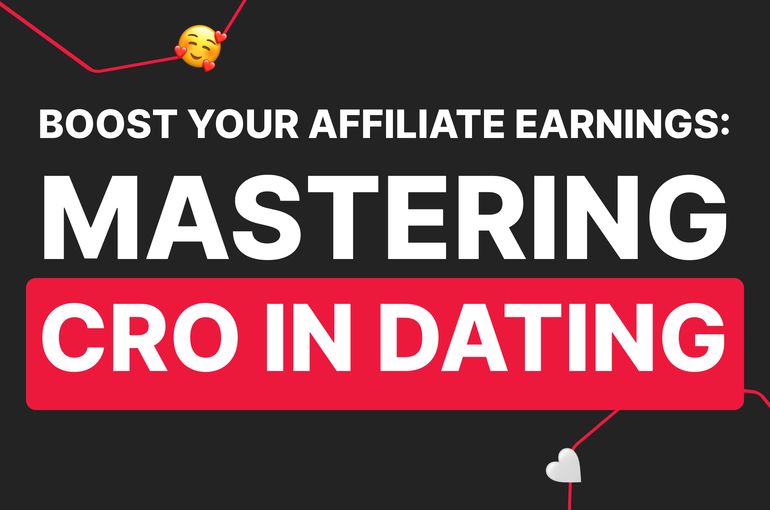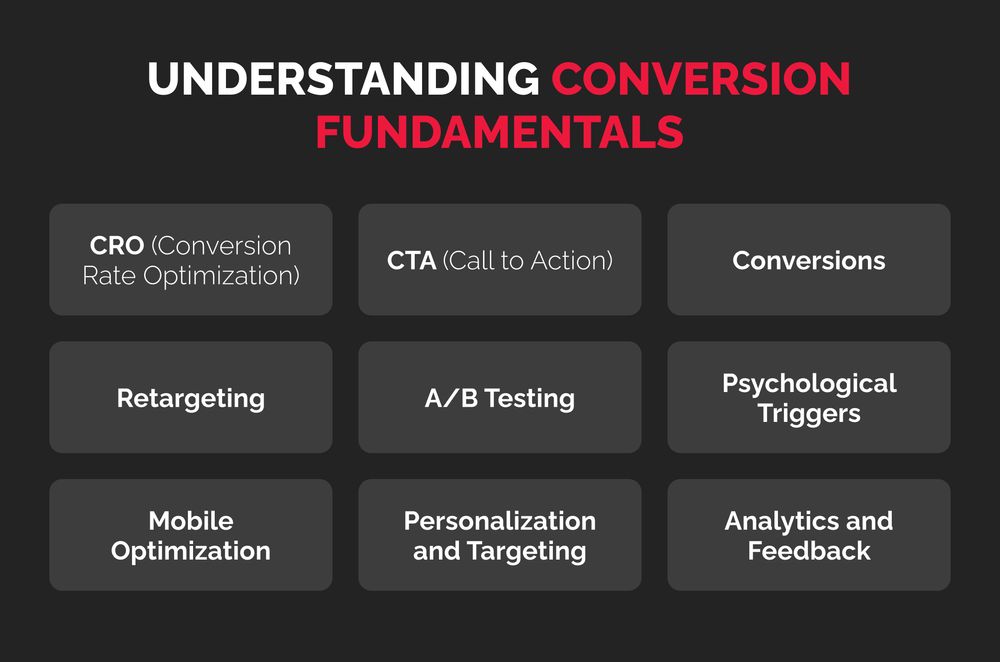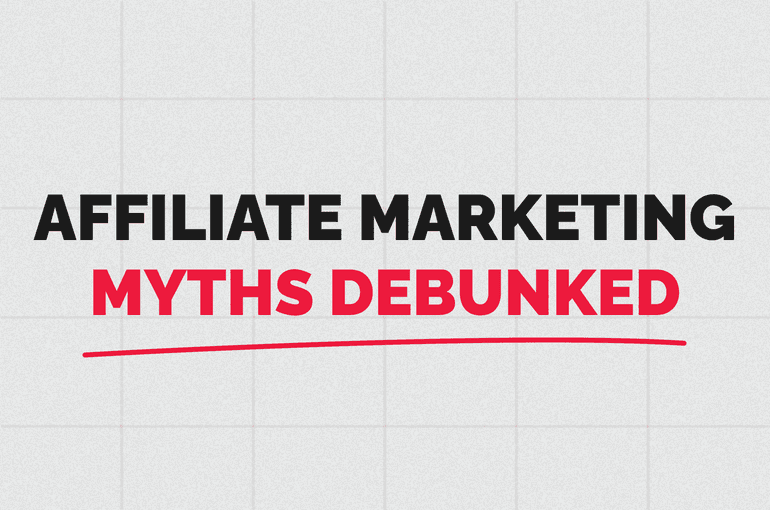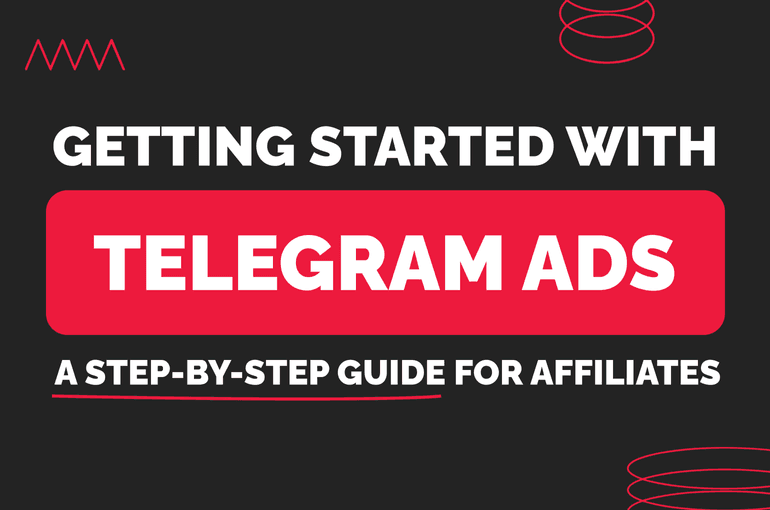Boost Your Affiliate Earnings: Mastering CRO in Dating

We continue our series on working in affiliate marketing, especially within the dating niche. Today, we're moving from the basics to more advanced terms—like CRO. Of course, we could boil down this article to discussing A/B testing and say that's enough. However, that wouldn't be the case in real life! See, it is not just about choosing the most profitable tested methods but also tracking many essential parameters to optimize your affiliate marketing conversion rates.
On the other hand, not everyone is a pro. That's why we'll balance professional strategies, tools, and fundamental concepts, including what exactly CRO in dating is and other related topics. So, if you're ready for:
- Retargeting.
- Using many different, less obvious metrics.
- Conducting numerous A/B tests.
- Learning about psychology.
- Maximizing every cent of an investment.
You're welcome to read our guide!
- Understanding Conversion Fundamentals
- What We Will Do
- Metrics and optimization
- Put The Metrics Everywhere
- SEO and Retargeting — another way to show how deep the rabbit hole
- What’s next?
- What can your company do else?
- Landing Page Optimization
- Effective Use of Call-to-Actions (CTAs)
- Psychological Triggers
- Mobile Optimization
- Personalization and Targeting
- Conclusion
Understanding Conversion Fundamentals

Before diving deeper into how to increase affiliate conversions for dating niches, let’s move through Affiliate marketing vocabulary.
- CRO (Conversion Rate Optimization) — Improve your website or landing page to encourage more people to do what you want (e.g., signing up or buying your product).
- CTA (Call to Action) — A button or link that encourages visitors to take a specific action, such as "Sign Up Now" or "Learn More About Product".
- Conversions — When someone does what your brand expects on your site, like registering or buying. It's like scoring a goal in soccer.
- Retargeting — Showing ads to people who visited your site but didn't take action, reminding them to come back and do something. Think of it as inviting someone back to finish a game they started.
- A/B Testing — Comparing two versions of your webpage to see which one works better. Like trying two different strategies in a game to see which scores more goals.
- Psychological Triggers — Using emotions or instincts to encourage people to act and interact with your product.
- Mobile Optimization — Making sure your website or page looks good and works well on phones since many people use them to browse the internet. Personalization and Targeting — Showing specific content to different people based on what your company knows about them, like showing soccer fans ads for soccer gear.
- Analytics and Feedback — Using user data and comments to improve your site. Think of it as reviewing game tapes to improve your team's performance.
What We Will Do
After laying the foundation for affiliate marketing conversion rate theory, let's get into what we'll actually do. We'll keep things as simple as possible. We will apply our affiliate marketing theory (all those boring bits about knowing your audience, learning psychological triggers, and choosing the right platforms) and track every step. For obvious reasons, we'll skip all the marketing theory basics for setting up an affiliate campaign. You can read more about them in our previous articles:
- Affiliate Marketing Glossary
- How to start Affiliate Marketing in 2024
- Prelanders: What are they and how use them effectively
- 2024 SEO Strategies for Adult Affiliate Websites
- Mastering A/B Testing in Affiliate Marketing
In general, we need to increase the number of conversions or decrease the amount of investment for the same result.

And how will we do it?
- Implement metrics.
- Utilize SEO.
- Eliminate all waste.
- Apply psychological tricks.
- Conduct retargeting.
Everything sounds straightforward in words, but what about in practice?
Metrics and optimization
Here, I have only four words for you: UTM and Heat Map. These are the only things your company needs for CRO. But what will your company do with these two tools? First, let's explain what these tools bring to the table:
- UTM – a special link that for the CRM to show where the user came from, helping to increase CRO. It's usually used to monitor affiliate conversions, especially when using many different sources. But we'll show another way to leverage it.
- The Heat Map – see where and how much time a user spends on a page. It's another tool that marketers underestimate because it requires significant traffic to draw conclusions.
The Heat Map uses metrics like mouse hovering and time spent on a page, but how it works isn't as crucial. What's important is that it works.
Put The Metrics Everywhere
Keep in mind: we're working with tests, and the results of these tests are not instant. So, your brand needs patience. Typically, your main area for converting users into income is a site or a landing page.
So, how can your brand optimize your conversions with UTM and Heat Map? First, your business needs to install a heat map on the landing page and observe where users spend the most and least time. At points where they spend more time, your company can place lead magnets, which could be anything from an anchor to a banner. Or, your project can push a message when the person is at a static point on the heat map. You're free to experiment and create conclusions based on the heat map data.
And how can your company use UTM links? Simple! You can use them to analyze different traffic sources. It’s the obvious path, so we won’t dwell on it much. But, a less obvious way to use UTM links is to apply different UTM links for different scenarios on one landing page. For example:
- Create a scrolling offer at the start of the landing, and for each of your offers, use different UTM links to analyze which converts more.
- Analyze the effectiveness of different lead magnets placed in various parts of the landing pages using UTM links.
These two tools are among the best ways to optimize a landing page. But they're not the only ones. They help any affiliate marketer in the dating market to improve their website conversion rates significantly. By implementing UTM and Heat Map tools, your brand can identify crucial points for optimization and increase engagement, ultimately boosting your conversion rate, revenue, and sales traffic. Additionally, these tools offer essential insight into customer behavior and platform performance, allowing for better content personalization and a more successful marketing strategy. Always remember, the goal is to create a more engaging and effective affiliate campaign, and tracking tools like UTM and Heat Map are pivotal in guiding such improvement.
SEO and Retargeting — another way to show how deep the rabbit hole

The reason for grouping retargeting and SEO in the same discussion is straightforward. We use SEO techniques to attract potential customers to our subsidiary sites and then, with aggressive retargeting, guide them directly into our conversion funnel.
Let me give you a vivid example. Imagine we're advertising something in the dating niche, and we know that if a potential client doesn't trust the resource we're advertising (for various reasons), we create another site. This site doesn't contain any direct links or the like. It will be highly optimized for SEO and offer expert information, such as dating singles in your area. On this site, we collect cookies and other publicly available personal information about the person, which we then use for retargeting.
We'll aggressively retarget the exact individuals interested in your product, service, or otherwise. As a result, we'll funnel them in, earning enough trust and a chance to convert them into members of a dating service or app. This is just one of the possible scenarios for using SEO and retargeting as a comprehensive tool to optimize your conversion rate affiliate marketing.
But what exactly should your company do in SEO?
- Handling many technical aspects (like robots.txt) helps to increase CRO.
- Optimize the search engine you use (or hire an SEO specialist).
- Insert keywords based on trends, geographical insights from Ahrefs, and SurferSEO.
- Audit your pages.
- Engage in routine SEO tasks.
- Purchase crowd links.
- Acquire backlinks from trusted resources.
To put it simply, all SEO tactics are tricks that help display your site on the search engine you're targeting (like Google, Bing, etc.). The trends for optimizing your page are always evolving, so it's crucial to stay updated with current recommendations. For example, over the last five years, the primary rule in SEO hasn't been keyword spamming or other tricks but creating trusted and verified expert guides that follow EAT/YMYL principles.
What’s next?
So, after applying the previous methods, we've achieved two goals. We've increased traffic by adding some organic traffic, which becomes cheaper the longer your company directs it to the landing page. We've also reduced costs by eliminating ineffective offers, lead magnets, and other elements that don't engage your visitors or convert them into the affiliate dating niche.
However, your company shouldn't expect a miracle after your company does your CRO website routines. The average affiliate conversion rate might double, yet range from 5 to 10% or 8 to 16%. Why? First, these are still ads, and few people love ads, even if they need them. Second, it's not just us who are clever enough to optimize to convert future users. Your competitors are optimizing their affiliate conversion rates, too. So, there's always stiff competition to secure your slice of the pie!
What can your company do else?

Now that we've covered the less obvious parts let's turn to the most basic and apparent aspects. But remember, all we can do is cut costs and increase traffic where needed. So, to optimize the conversion rate, we can:
- Continue optimizing the landing page: through UTM, Heatmaps, SEO, conversions, or A/B testing. It doesn't matter. We do not advise using a plugin to get the sitewide recommendations because we’ve seen that the manual setting works better.
- Use effective CTAs. On the one hand, the approach can appear simple and obvious. On the other hand, when you follow the theory, it tends to work better, and your company will see it as a CRO increases.
- The same goes for psychological triggers. They may seem obvious (all those time triggers and other emotional tricks), but they work, so there's no reason to avoid them. Especially if your company can place them correctly using your heatmap.
- Opt for mobile optimization in your commercial business project. It's better to create a mobile landing page and then optimize it for the desktop version. Trust us, it's more effective.
Of course, thousands of services can measure and detect thousands of parameters. We can't recommend one over another. It's best to focus on the metrics your company needs at the current point.
Landing Page Optimization

To make your landing page work really well, your company gotta do a few things. Use heat maps and different UTM links. Why? Because they help a lot. Heat maps show your company where people look and click on your page. This means your company can see what grabs their attention. Your company wants to put your best stuff where people look most. That's usually right at the start.
UTM links are like a special code that tells your company where your visitors came from. This is helpful because your company knows which ads or links work. If your company sees one source sending your company visitors who really dig what you're offering, your company knows to use that source more. The big goal is getting visitors to become customers fast. The quicker they go from just looking to buying or signing up, the better your conversion rate. That's how often visitors do what your company wants, like buying your product. And a better conversion rate means your affiliate marketing in the dating market is on fire.
Remember, everything on your landing page – like pictures, words, and where things are placed as their element places – needs to be easy and quick to get. This makes people more likely to do what your company wants. So, heat maps and UTM links aren't just fancy tools; they're your best friends for making a landing page that works.
Effective Use of Call-to-Actions (CTAs)

For an effective call-to-action (CTA), think about what your company wants people to do on your website without effort. It's all about getting them to act. First, catch their attention with something that stands out. This could be a button or text on your landing page that says "Join Now" or "Learn More." Ensure this button or text is easy to see and tells visitors exactly what your company wants them to do.
Your site must load fast so people don't leave before seeing your CTA. Tracking how people interact with your CTAs can help improve them. Still, your company might need to test different words or colors to see what works best.
Psychological Triggers

For using psychological triggers in the dating niche, keep it simple without extra image elements. Don’t repeat the mistakes lousy marketers make in the name of Google optimization! Just push the right point of audience pain. Think about what makes people click, join, or buy. Leverage basic human feelings like desire, curiosity, or the fear of missing out (FOMO) to grab attention.
- Show what they can gain. In dating, this could be finding love or companionship. Make sure your website or campaign shows the happy outcome of using your service.
- Make them want to know more. Use questions or hints about what they can discover through your service.
- Suggest that if they don't act now, they'll miss out. This can be effective in time-limited offers or exclusive dating events.
- Build it by showing success stories or testimonials. People need to believe in your service.
- Make taking the next step easy. If your website is easy to navigate and your offers are clear, more people will take action.
Remember, the goal is to increase conversions. Use the results of the analysis to track what works. Adjust your strategy based on data. Always aim to provide a better experience for your visitors. This will help optimize your website, making it more successful in converting visitors into customers in a long-term strategy.
Mobile Optimization

For mobile optimization in affiliate marketing, especially in the dating niche, creating a mobile-specific version of your website can be more beneficial than simply making your desktop site adaptive. This is because mobile versions allow for better control over the user experience (UX) and user interface (UI) standards, which are crucial for engaging visitors. Mobile sites load faster, which is vital for keeping potential customers' attention. Faster loading times improve the visitor experience and can lead to higher conversion rates.
Personalization and Targeting
To personalize and do targeting right in affiliate marketing, especially for dating sites, follow these simple steps:
- Find out who's coming to your site and what they like. Use tools to see what they do and what they're into. We mean identify your audience to target them more accurately and increase your commercial potential by reaching the goals set in the start of your marketing campaign.
- Split your visitors into groups that share something in common, like what they enjoy or where they're from.
- Create stuff that talks right to what each group likes or needs. If your site's about dating, write about tips or ideas that fit exactly what some visitors are looking for.
- Change up your site a bit for different people. Show them greetings, articles, or deals that make sense based on what they've liked before.
- Always try out new ways to do steps 1-5 better in a long-term strategy. See what changes make people more interested and tweak your approach based on that.
Conclusion
So, we dove deep into affiliate marketing, especially in the dating niche, to make it really work. From understanding your visitors with tools like UTM and heat maps to making your website or landing page the best spot for singles looking for love. We covered how to grab attention with smart CTAs and use psychology to nudge people in the right direction. And, don't forget about providing a mobile-friendly experience—most folks are scrolling on their phones, after all.
We also touched on the power of SEO and retargeting to bring back those almost-lost loves and turn them into conversions. Remember, it's all about testing, tweaking, and keeping an eye on what actually gets people clicking and joining.
You’re free to use all the instruments to get you up to speed, but remember that miracles don’t exist. As a good starting point, focus on 5-15% of conversion affiliate marketing!
Recommended Articles

Top Common Myths About Affiliate Marketing Debunked

Master Telegram Ads: A Comprehensive Guide for Affiliates

